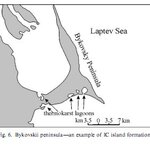Environment

Food waste is a big problem, particularly in the developing world, but also in the rich world. I have seen quite a bit written recently about how one of the best ways to improve the sustainability and lower the footprint of food production would be to reduce waste. While this is absolutely true, the perspective that has been missing is that we have been working on this issue for a very long time and have made significant advances over the last several decades.
That does not mean there isn't plenty of room for additional progress, but that is harder than many might imagine.…

Food waste is a big problem in the rich world, and even more so in the developing world. Recently, much has been written suggesting that one of the best ways to improve the sustainability and lower the footprint of food production is to reduce waste. While this is absolutely true, the missing perspective is that efforts to reduce food waste have been going on for a very long time, and significant advances have been made over the last several decades.
That does not mean there isn't plenty of room for additional progress, but that is harder than many might imagine. I think…

While America has dramatically dematerialized its environmental footprint in recent decades, producing far more food on far less land than 30 years ago, that's not true for the rest of the world.
Heavy financial incentives in places like Europe - which accounts for 85% of the agricultural subsidies for the entire world - mean there is no reason to embrace modern science and technology. But a new paper notes that allowing land use to be determined purely by those agricultural constituencies results in considerable financial and environmental costs to the public.
Scholars…

There was a period of time when hunters were the greatest conservationists. Think President Teddy Roosevelt, who evangelized national parks and setting aside wilderness for the public.
Later, environmentalism became an occupation for urbanites and they distanced themselves from sportsmen and people who enjoyed nature - they even listed them as enemies, in the case of hunting and fishing.
But a public exhibition of big game trophies, seminars and other attractions July 17th-20th at the Silver Legacy Resort and Casino in Reno, Nevada shows that activists now have bigger fish to fry…

Rat poison used for marijuana fields is killing fishers in the southern Sierra Nevada, according to a new paper.
A previous study published last summer documented that rodenticides were being found in the tissues of the cat-sized, weasel-like critters which live in rugged portions of the southern Sierra Nevada. The authors speculated that the most likely source of the poisons was the marijuana fields found throughout the Sierra Nevada.
Their new paper solidifies that link, documenting that female fishers who live in areas with a higher number of marijuana sites had more exposure to…

Researchers affiliated with the Institute of Organic Agriculture in Switzerland and the Institute of Agricultural Sciences in Germany published a meta-study in which they conclude that organic farming methods lead to higher rates of carbon sequestration in soils. This work was well done and published in a well respected journal, PNAS. Unfortunately the ramifications of the paper are being badly misinterpreted by environmental and food bloggers who are organic advocates. The scientific authors make no claim that their analysis is a full, net carbon…

If you live in an arid region, you know keeping it green is an environmentally stressful activity. But some arid regions have been getting greener on their own and scientists have long suspected that a flourishing of green foliage around the globe, observed since the early 1980s in satellite data, springs at least in part from the increasing concentration of carbon dioxide in Earth's atmosphere.
A study of arid regions around the globe looked into the potential of a "fertilization effect" of carbon dioxide and found that it has, indeed, caused a gradual greening from 1982 to 2010.
The…

New Arctic - New Discoveries
The world is warming, but the Arctic is warming fastest. The Arctic of today is not the Arctic which 18th or 19th century explorers knew. Where ships were once likely to be crushed in heavy ice there is now often no ice in summer. Where ice shove once built natural sea walls we find coastal erosion as waves are now free to erode melting permafrost. New islands are being discovered, even as older islands erode away into sandbanks.
The transformation of a peninsula into an island can be observed nowadays on the Bykovskii Peninsula (Fig. 6).…

Much like in Frank Herbert’s "Dune", a science-fiction epic about
characters attempting to rule a planet torn apart by conflict, the issue of
balancing desires for resources, and their impact on people, faces much of
Africa today. The planet that serves as the stage for that story, a barren
desert where control over said resources dictates human events, in many ways
mimics the present situation on the African continent. Addressing
environmentalism and conservationism in Africa poses a multifaceted challenge
as the continent faces a myriad competing priorities and obstacles. …

Researchers have detected microplastic pollution - a concern in oceans because small bits of plastic can be harmful to fish and birds that feed on plankton or other small waterborne organisms
- in one of Western Europe's largest lakes, Lake Geneva, in large enough quantities to raise concern.
Both the beaches and lake water of Lake Geneva were shown to contain significant amounts of microplastic contamination - pieces of plastic waste up to 5 mm in diameter. Alarming in a continental freshwater lake, but microplastics in continental waters may be the main source of…